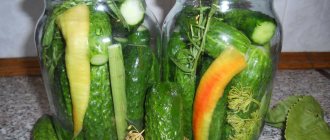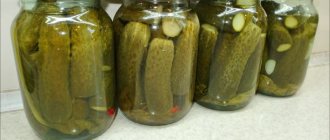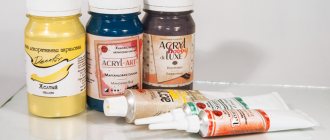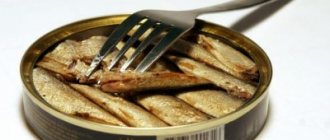How to open a tin can without an opener? Advice from craftsmen
Canned food has become a part of our lives. And now it’s difficult to imagine our existence without this useful invention. Neat tin jars are very easy to use. They allow you to store the desired product for a long time without requiring special conditions. Many special devices have been invented to open such containers. But sometimes situations arise when these necessary items are simply not at hand. What to do in this case? How to open a tin can without an opener? It turns out that there are several interesting ways to do this. As an example, we can consider some of them.
With a knife
People do not always use some items for their intended purpose. Their ingenuity allows them to use the simplest things for the right purposes in a difficult situation. For example, there is a tin can of stew, but there is no can opener to open it. What to do in this case? How to open a tin can without an opener? This is where a regular kitchen or pocket knife can come to the rescue.
You just need to follow a few simple steps:
- First, the jar itself needs to be placed on your knees or held tightly between your legs. Otherwise, it may jump to the side, and the person risks getting hurt.
- After this, the tip of the knife should be placed at the very edge of the jar, positioning it vertically to the surface.
- Holding the handle with one hand, you need to strike it with a strong blow from above with the other. In this case, part of the tip will be inside the container.
- Then, using forward movements, you should carefully cut the lid, moving the knife strictly along the diameter of the circle.
- Pry the cut edge with the tip and lift it up.
This is one of the most popular options for how to open a can without an opener. Most men use it. As you know, many of them constantly carry a knife with them. And having a certain physical strength, it will not be difficult for any of them to perform simple actions.
Opening cans using improvised methods
Especially often such problems arise during hunting, fishing or hiking. It can be a shame when hunger strikes and there is nothing to open the existing can of stew. Then everyone remembers how to open a can with improvised means.
Available means
A flat stone or piece of concrete is suitable for this method. Proceed as follows:
- turn the jar upside down;
- slightly squeezing the edges, rub the protruding rim with the rough surface of the stone;
- when wet stains appear, turn them face up;
- insert a spoon or other hard object such as a screwdriver or large nail into the hole that appears and pull in a circular direction around the rim until the rim opens.
Attention! In this situation, it is prohibited to use a knife, as it can come off and injure your hands.
Only your own hands
But sometimes it turns out that not only a special device for their jar is missing, but also available means. Then they use the old, well-known method, which allows you to open canned food with your hands. In this way, you can open jars in which pineapples, peas or corn are preserved. They are tall in shape with several rows of tongues and grooves forming a ring around the center. You can remove the label to find them. Often such grooves can be seen on cans of condensed milk.
Attention! Before opening canned food in this way, the jar should be placed in a plastic bag, otherwise the entire contents may be lost if opened abruptly.
The steps are as follows:
- The jar is positioned horizontally.
- The hands are positioned so that they rest against the upper parts of the plane of the can closer to the edge.
- With your fingers closed, the container is squeezed until a dent is formed.
- Do the same on the other side until it looks like an hourglass.
- Holding the dents on both sides, shaking them, they try to bend the container in different directions until the seal is broken.
- Further, the bank is easy to hack.
The contents should be transferred to another container and examined for the presence of metal fragments.
Attention! This method is not suitable for small cans without grooves.
Penknife
Sometimes, to solve the problem of opening canned food, you can use a regular pocket knife.
Important! It is easy to get hurt when opening a jar this way. Therefore, you should proceed with caution.
Before opening a canned metal can with a knife, it should be held so that it does not slip out of your hands. Then do this:
- the knife is held vertically relative to the can;
- The sharp tip of the knife is placed in front of the rim at the edge of the can;
- while one hand holds the knife by the handle, you should sharply hit it with the other hand so that the tip of the knife pierces the lid;
- making forward movements with a knife, cut the tin in a circle, holding the can tightly with the other hand.
Remove the product carefully, as a pocket knife will leave jagged edges.
Tablespoon
For this method you will need a strong spoon made of stainless steel. When opening, follow the following sequence:
- The jar is tightly fixed with one hand.
- Take a spoon in the second hand and press on the lid at the recess near the tin side until a narrow gap appears.
- With forward movements, expand the resulting gap along the diameter of the lid until it is completely open.
- After removing the lid, it is advisable to transfer the canned food into another container, examining it for the presence of fragments.
Methods for opening canned food without special tools are very labor-intensive and require considerable effort, but in this case the result is important.
With bare hands
Sometimes, by the will of fate, people find themselves in situations where they have nothing in their hands that could help solve such a problem. In this case, they have to rely only on themselves, deciding how to open a tin can without an opener. There is a method that only a strong and physically developed person can use. To do this, he will only need his own hands. The whole process consists of three stages:
- Holding the jar between your palms in a horizontal position, use the fingers of both hands to make a dent on the side surface exactly in the middle. After this, press the edges again so that the container bends even more in this place.
- Repeat the same steps on the opposite side.
- Firmly grasping both bottoms with your hands, make counter forward movements. As a result, the deflection points will crack and the can can be divided into two equal parts.
True, this method is applicable only if there is not a large amount of liquid inside the container. Although even this circumstance will not stop a hungry person.
Steps
Using a pocket knife
- A waist-high table is perfect. Stand over the jar so that you can work comfortably.
Place the tip of the knife over the inside edge of the lid.
Hold the knife vertically, not at an angle. Grasp the handle so that your fingers do not accidentally slip onto the blade. The back of the hand is facing upward.
- This method is more effective than trying to saw through the lid with a knife blade. With the latter option, you will ruin the knife, and metal shavings will almost certainly get into the food.
- Make sure the knife is vertical and secured so it doesn't slip.
- You can also use a chisel or other durable tool similar to a pocket knife.
- Lightly tap the knife handle.
With your other hand, lightly tap the back of the hand you are holding the handle with. This will allow the tip of the knife to pierce the lid.
- Don't hit too hard to avoid losing control of the knife.
Strike with an open palm to get a better feel for the knife.
Pry up the lid.
Insert the tip of the knife into one of these holes. Pry and carefully lift the cover.
Rub the new hole next to the finished point. Continue until the lid is wiped clean. Now the hole made in the lid has become a little larger.
Move around the entire circumference of the lid.
Continue moving the spoon and wiping the lid a little at a time until you have gone all the way around. The lid is now almost open. Do not overturn the jar to avoid spilling the contents.
Pry up the lid.
Slide a spoon under the edge of the lid. Pry and lift the cover up. Carefully peel back the lid to open the jar.
- If you can't pry the lid off with a spoon, use a knife. Using a knife, you can even cut through small sections of the lid that are still attached to the jar.
The edge of the lid is sharp, so be careful not to cut your fingers. If necessary, use an oven mitt or towel for protection.
Using a chef's knife
- Place the jar on a stable surface.
A waist-high table is perfect. Do not place the can on your lap or squeeze it between your legs. The knife may come off and injure you.
Hold the knife where the handle and blade meet.
Place the top of the knife in your palm directly above the intersection. Your fingers should be positioned on the sides of the handle, at a safe distance from the sharp edge of the blade.
- Grip fairly firmly. This method can be dangerous if the knife slips out of your hand.
Do not use a knife that is smaller than a chef's knife for this method. A chef's knife is large and heavy, weighing more than a scoring knife or steak knife. To successfully pierce the lid, you will need a knife with a fairly heavy blade.
- Place the heel of the knife over the inside rim of the jar.
The heel of a knife is the widest point of the blade. It is opposite the tip of the knife. Place it over the inner edge of the lid near the rim.
- The heel should be centered exactly under the place where the knife is fixed in the hand.
Press it firmly against the lid so that the knife does not come off.
- Press your heel into the lid.
Press firmly with the heel of the knife to pierce the can and create a small hole. If you can’t pierce the lid, try standing up and leaning on the jar. Hold the knife with one hand. Place your other hand on the top edge. Press down with both hands to pierce the lid.
- No need to hit the can. The knife may come off and injure you. Instead, you need to slowly but firmly press down on the knife until your heel pierces the lid.
Don't be tempted to use the sharp edge of a knife to puncture the can. The heel is more stable and will not slip. Also, if you puncture with a sharp part, you will ruin the edge of the blade.
- Move the knife and make a new hole.
Move the knife a few centimeters along the edge of the lid. Make the next hole in the same way.
Continue making holes around the circumference of the lid.
Go over the entire lid as you would with a regular wrench. The lid is now almost open.
- Pry up the lid.
Insert the tip of the knife into one of these holes. Pry and lift the cover. Do not point the sharp part of the blade towards your body to avoid accidental injury. Carefully peel back the lid.
- If necessary, use a smaller knife to cut through the remaining sections of the lid.
You can protect your hand with a towel when you lift the lid. The edges of the lid are sharp, so protection will not hurt.
First of all, let's get acquainted with the history of the issue. The problem “how to open a can of sprats with two spoons and a slipper”
famous primarily for being in the top ten suggestions for a Google query for the word “how” (or for the phrase “how about”, because Google offers different query options for each user):
It comes from this quote from the well-known resource bash.org.ru:
J: - I recently met Sanya “The Chef”, do you remember this one?)))
Megatro: - ***, of course))) he’s just a legend in our dorm!! first chickens are still shown video tutorials and told, “How to cook dumplings in an electric kettle in 6 minutes”, “How to open a can of sprat with two teaspoons and a slipper”, “How to quickly boil eggs in a still hot frying pan”, “How to using 2 compasses and polystyrene foam to make a canister for liquid”... the dude had simply unrealistic thinking...))
This concludes the excursion into history. Let's move on to the theoretical part. While searching the Internet and interviewing friends, I found several exotic assumptions. I present them as much as possible in their original form (just put them into a coherent form a little). So, how to open a jar using two teaspoons and a slipper:
- One spoon with a handle is placed on the jar, the second one covers it with a “paddle” and this structure is hit from above with a slipper (Internet)
- Break one of the spoons in half so that it is sharp, place the sharp end of the handle on the jar, then cover it with the second one and, holding it with a slipper, hit it hard. (M. Uchaikin)
- The spoons are placed spread apart on the jar with the handles down, then they are hit with a slipper. (Internet)
- We place a spoon on the canned food, cover it with a second spoon on top with a ladle so that it rotates freely, and begin to rub it with a slipper. (Sems)
- Rub the edge of the can on the asphalt to make it thinner. Then put it on a slipper so it doesn’t run away, and finish off the puree with spoons (Internet)
They all agree on only one thing: as soon as a hole is made in the jar, you can then easily widen it with one of the spoons.
Having collected enough options, I began testing them experimentally. So, on Friday, September 11th, I bought 3 cans of sprat in tomato, brought it home and started experimenting. Here is a short photo review: The initial set of tools. Testing Hypothesis #1 Trying to understand Hypothesis 3... The spoons were never recorded. Yes, we also tried this method. The jar looks dented, but intact.
The research was carried out by me and my brother. We immediately encountered a whole list of difficulties:
- The jar slides, the spoons fall. You need something to hold the jar and the spoons on it. We moved the jar to the wall so that it wouldn’t run away - but you still need to hold the spoons. And at the same time, I also want to photograph the process in detail so that the position of all the objects can be seen!
- Spoons are more likely to bend than jars to give up. Besides, I feel sorry for the spoon.
- An old slipper is very fragile and uncomfortable. It bends. It is more convenient to hit with your fist, although it is more painful.
- The old slipper is very dirty. From frequent blows to it, the wet can quickly became covered with dirt. If the can had been broken through, the sprat would have had to be eaten along with... God knows what.
So the next day I went to the store to buy a set of spoons and a pair of new slippers. I quickly found a package of 12 spoons, but I struggled a bit with choosing shoes. Second-hand stores in the city differ from regular stores in price by only 15 rubles; boutiques offer slippers four times more expensive. And now an interesting fact. A package of 12 teaspoons costs more than a pair of ordinary men's slippers. A pair of slippers costs more than three cans of sprat. A can opener costs less than one can of sprat. This irrefutably proves that I am engaged in real perversion, bullshit and nonsense, that is, I am moving along the right path a la brainf*ck. The day turned out to be rainy, so in order not to test hypothesis No. 5 on wet asphalt, the experiment was postponed until tomorrow. So, Programmer's Day came, I gathered my team of assistants and went to break banks in the name of curiosity. We went out into the yard and took a table tennis table. Toolbox version #2. Testing hypothesis #1 Testing hypothesis #3 Both hypotheses turned out to be not entirely consistent. It turned out that my spoons are aluminum, and are even less suitable for being knocked on with slippers. They bent very easily and I only managed to dent the jar a little. However, their weakness turned out to be their strength. This spoon is very easy to break. I did not follow the photographer (I was carried away), so I apologize that not all actions are covered with illustrations. Having placed the sharp end of half a spoon on the jar, I easily drove it inside with a few blows: Another assumption had to be checked: that the hole could be easily expanded using any of the spoons. Using both a broken piece and a whole spoon, I've seen this personally: It's quite slow, but the spoon can actually fit inside and act as a lever. If you have good patience, you will achieve your goal. However, you can drink even from this hole. About correctness: yes, I did not cover the piece of spoon with a whole spoon on top. But I used a whole spoon to widen the hole. In general, I don’t like the idea of covering: the spoons slide. Therefore, I will consider the version to be correct without reservations. So far: versions No. 1 and No. 3 have been debunked, version No. 2 has been recognized as reliable. In general, everything turned out very badly with hypotheses No. 3 and No. 1. The spoons did not stay on the jar: Besides the fact that they constantly fell and bent, I could not swing properly to hit them. The slipper also slipped. Perhaps someone else will be able to open the jar like this, but I couldn’t. So what do we have so far? Two methods do not work, one works, but we open the jar at the cost of losing the spoon... so we can be left without cutlery. Let's move on. Hypothesis #4 did not work out for me. I couldn't fix the spoon properly. She slides on the can. In addition, if you cover it with another spoon, then they both slide over each other. Well, these are the teaspoons I have, they are shallow. Therefore, I could not place the spoon so that it would rotate freely. But this was the main condition! I honestly tried to hold it with a slipper, rotate it in my hands, and even twist the jar around a spoon, and not vice versa - but to no avail. Perhaps someone more dexterous will be able to demonstrate this - but I could not. The version is destroyed. Let's move on to the last option: asphalt. I honestly rubbed the can on the asphalt until I rubbed off the label. Things were moving very, very slowly, so we decided to slightly change the experimental conditions and I started rubbing the can on the curb nearby: I don’t consider this a big discrepancy with the hypothesis. Rather, an improvement. Judge for yourself: very soon the can took on this form: And after a few more seconds, a tasty liquid flowed down the curb: This is a nice wide hole through which you can scratch something out with a fork. I think this version can be awarded the win. So we have another winner and another loser. But the methods have run out, but the courage is not lost! We have another jar! What to do with it? I know! It must be broken down into molecules! I decided to split it in the old proven way: A fair amount of tomato was sprayed in my face, but the goal was achieved: Theoretically, if you repeat this process for a long enough time, you can actually achieve splitting into a certain set of molecules. Even if you don’t hit exactly in the middle every time. But we no longer had time, because a delicious lunch was waiting for us: I pay tribute to my assistants, who faithfully helped me with advice and deeds in this difficult experiment: Ilya “Cheese” GrigorievNatalia “Alpha” Yakovchenko (prepared a spoon and broke lunch...or vice versa, I don’t remember) Yaroslav “Midnight” Logunov (assisted as a photographer) Thank you all, the experiment is over. Once again I repeat the results of testing the hypotheses:
- Destroyed
- Confirmed
- Destroyed
- Destroyed
- Confirmed
Overall result: yes, it is quite possible to open a can of sprat with two teaspoons and a slipper.
The problem is that after this there will either be a little dirt in the sprat, or you will lose one of the spoons. Therefore, I still advise you not to be lazy and run for a bottle opener. How to open a tin can without an opener December 1st, 2015
“During the zombie apocalypse, I’m trying to survive and found a can of meat, I’m dying of hunger and I have nothing to open it with, no tools,” said Taras Kulakov.
· Turn the tuna can upside down and place it on a concrete slab or other rough surface.
· Rub the can back and forth quickly on the concrete slab.
· Once you have scraped enough, you need to squeeze the edges of the jar and open it. If you can't, pry the lid off with a knife.
Subtleties of design
But the use of force is not the only way out of such a situation. Yes, and the knife may not be at hand. How then to extract its contents from a tin container? Don't throw it away in this case. Sometimes the clue lies in the technical side of the issue. Understanding the technology of sealing food in tin containers, you can figure out how to open a tin can without an opener and a knife.
As you know, in industrial enterprises the process of rolling a tin container is that the edges of the lid are bent around the cylindrical base of the container using a press. To remove it, you need to remove the protruding layer of metal. This is very easy to do:
- You need to take the jar in your hand so that its bottom lies in your palm.
- Turn it upside down.
- Pressing the jar onto a hard, rough surface (concrete, stone), make circular movements. Literally in 2-3 minutes the “side” will be erased. After this, all you have to do is lightly press the container from the sides, and the lid will bounce off to the side.
This method can be useful for those who find themselves far from civilization and do not take care of everything they need in time.
Classic version
- put the condensed milk on the table, press the sharp end of the opener to the top of the can and hit its handle with your hand, a hole will appear
- insert the point into the resulting hole
- hold the can with one hand and the handle of the opener with the other
- move slowly up and down in a circle
- pick up the lid with the tip of the opener and gently pull up.
You can use a simpler method and use the edge of a canned knife to make a hole in the lid, then you can simply drink the liquid or pour it directly from the hole. Just be sure to make a second hole in parallel to maintain pressure in the jar.
But it may happen that when you went to nature or to the country, you forgot to take the bottle opener with you. How to open condensed milk if the necessary device is not at hand? You can use other simple methods to open a tin container.
Non-standard use of cutlery
People always try to stock up on all sorts of clever gadgets to make their lives easier. But sometimes the situation gets out of control, and it becomes necessary to look for a non-standard way out of the situation. For example, you need to decide how to open a tin can without an opener at home. To do this, you can use the simplest tablespoon.
The whole process will, of course, take some time. But in a hopeless situation, this problem fades into the background. To open a regular tin can:
- Hold the container tightly with one hand. It can be placed on a table or held on your lap.
- Take a spoon in your other hand and rub it with its edge along the lid in the place where it comes into close contact with the “side”. Tin is a relatively soft material, so after just a few minutes a gap will form in that very place. It is advisable to do this around the entire perimeter.
- After this, you can use strong pressure to expand the resulting hole as much as possible. And then, using the spoon as a lever, lift and remove the lid.
We recommend reading: How to Store Boiled Pork Tongue
It is better to do this work with cutlery made from more durable material. Therefore, an aluminum spoon will not work for this.
This method can be useful for those who find themselves far from civilization and do not take care of everything they need in time.
Why canned corn is dangerous?
Today we will talk about canned corn.
• When choosing canned corn, it is very important to choose the right can. The corn in the jar must be kept in special conditions so that it does not come into direct contact with the metal. If a can is dented, the inner lining of that can may become damaged. In this case, the process of interaction of the liquid component with the metal will begin, which will lead to the corn being enriched in copper and tin.
• It is also necessary to pay attention to the composition. According to GOST, canned corn must contain: corn, water, salt and sugar.
• After opening the jar, you need to drain the juice to assess how harmless this corn is. The juice should be cloudy, which means that a lot of starch has been added to the solution, which indicates that the corn was initially soft. If the solution is clear, the corn will most likely be a bit harsh.
• Amount of corn in the jar: normally it should be at least 60%. To check this, you should pay attention to two inscriptions on the can: net weight and corn weight.
• And, of course, when choosing canned corn, you need to pay attention to its expiration date.
Corn helps you lose weight. Canned corn is a fairly low-calorie product. The fact is that if some product is added to a ready-made diet, it will add calories, and if it replaces some products, it will help you lose weight. But the diet must be balanced; in no case should you lose weight by eating only canned corn.
When canning, corn does not lose all its vitamins and microelements. When canned, corn contains many times more sodium. But some vitamins and minerals are reduced by 5-6 times during canning.
You can drink the filling from a can of canned corn. There will be no benefit from this, but it will not harm the body either.
Canned corn does not cause bloating. Moreover, when a person is bloated, he is recommended to eat canned corn so that the bloating disappears.
After opening the can, the corn needs to be transferred from a tin container to a glass one. Moreover, it is advisable to transfer it to a glass container with a lid to prevent oxidation processes. If corn is stored in an open container, for example in the refrigerator, then the corn absorbs the odors that are there.
Canned corn does not cause bloating. Moreover, when a person is bloated, he is recommended to eat canned corn so that the bloating disappears.
So we brought home a jar of canned food. When purchasing, we were convinced that they were of quite good quality - without signs of bombing, flappers or rust, with a clean shiny surface of the tin, covered with colorful, bright labels.
In glass jars, through the glass, you can see that the syrup in the compote, the filling in the peas and the brine in the marinades are quite transparent and clean, this further convinces us that there is no fermentation in the jars and that the canned food is quite good.
When opening benign canned food, at the moment when we pierce the tin lid, a weak, somewhat whistling sound is often heard, which immediately stops. This means that there was a rarefied space in the can under the lid (or due to the fact that at the time of capping this space was filled with steam from the hot contents, and then when the canned food was cooled this steam condensed or the capping was done on special vacuum machines) and now this outside air enters the space. The presence of a vacuum (vacuum) in the jar once again indicates the good quality of the canned food.
In the opened jar we see that the contents do not fill its entire volume, but there is a small free space of 7-15 mm. Glass jars are filled up to their shoulders. The free space in the jars is filled with air, sometimes it is rarefied air. Air itself does not cause spoilage and therefore its presence in the jar is acceptable, although it is better if it is rarefied air. The less air in the jar above the product, the less oxygen there will be. Oxygen, actively affecting the contents, causes some undesirable changes in canned food. In particular, it contributes to the destruction of vitamin C, as well as the darkening of the surface layer of the product due to the oxidation of certain substances, which is especially noticeable in light-colored products - squash caviar, vegetable solyanka, tomato paste, etc.
How to open a tin can with a knife
This is the easiest and most popular way to open a can if you don’t have an opener at home. Open the jar with a knife very carefully. At the same time, you should not hold it on your knees or between your legs - the knife may slip, which will lead to a cut.
You can open a tin can with any knife - a pocket knife, a camp knife, or a simple chef's knife. To do this, the tip of the knife must be placed against the edge of the tin can. With one hand you need to hold on to the handle of the knife, and with the other, carefully but firmly hit from above. Under no circumstances hold onto the blade while opening - even the dullest knife can cause cuts. When you punch a hole in the lid of a can, use a knife to carefully cut the lid along its entire diameter. After this, carefully pry the edge of the lid with a knife and lift it up. There is no need to pry or lift the lid with your bare hands - there is a high risk of cutting yourself with the sharp edges of the metal.
What to look for when choosing
A can opener is a simple tool in the kitchen, but despite this, its choice should be approached with special responsibility. To ensure that the knife is of high quality and durable, the following criteria should be taken into account before purchasing:
- Form. Mechanical type openers are produced in various forms. Most often you can see models with handles on sale: they snap onto the top of the can and turn using a special valve located on the side. There are also round models that fit completely onto the lid of the jar and open it with serious effort from the user.
- Material. First of all, pay attention to the quality of the stainless steel and the thickness of the knife. The higher the reliability of the model, the longer it can serve you. It is not recommended to purchase plastic models, as they deteriorate faster than metal ones. Electric knives must be made of quality materials, especially the cutting mechanism.
- Build quality. The arrangement of the parts between each other is of high importance. They should be pressed tightly, not loose or play. Opening metal edges must have special treatment against burrs.
- Pens. They should be comfortable, fit well in your hand and not slip out of it. Otherwise, you will not be able to fix the knife on the lid and open the jar.
- Battery. Electric type models can operate via power or from the network. Corded knives are heavier and larger than battery-powered models.
Sources used:
- https://vplate.ru/kuhonnye-aksessuary/kak-polzovatsya-otkryvalkoj/
- https://posudaa.ru/kuhonnye-prinadlezhnosti/kak-polzovatsya-otkryvalkoj-dlya-konservov
- https://obzorus.com/7-luchshih-konservnyh-nozhey-dlya-doma/
How to open a glass jar
Canned food in glass jars has two types of lids. The first type is screw caps, which are usually used in production. The second type of lids are simple lids, which we use in home canning, that is, when screwing them on.
To open the screw cap, you just need to pry it open with a knife and let air in. At the same time, you will hear a characteristic pop, which indicates that the contents of the jar were suitable for consumption. If you don’t have a knife at hand, you can simply hit the lid with something to make it slam. This could be a small rubber mallet, a rolling pin, or just your elbow.
If you want to open home canned food, you need to use a knife. To do this, mark the letter “L” or a tick on the lid. The corner and ends of the proposed “daw” should rest against the circumference of the lid. Insert a knife into the lid and cut the lid along the marked lines. After this, carefully bend the sharp corner of the tin and hook it with a knife. Then wind the cut part of the tin around the knife until the very end of the lid. Remaining tin lids are very easy to remove. At the same time, be careful - do not cut your hands - all actions should be performed only with a knife.
Video
Nourishing, tasty, just melts in your mouth! It contains all childhood dreams! But not only kids are in love with this product, we all easily turn into pooh-poohs when it comes to... condensed milk. It is used to lubricate cake layers for your favorite waffle cake, which more than once saves any housewife when guests are on the doorstep or when you want to pamper your family.
This product is used in creams or as a filling for cakes and dried fruits, for homemade sweets. Condensed milk is such a popular product in making desserts that it is worth paying attention to it. Or rather, we will talk about how to cook condensed milk in a jar at home. Let's break some housewives' spell of fear before cooking condensed milk. For the purity of the experiment, everything I say will be done right there, before your eyes.
How to open a jar with bare hands
If you don't have anything suitable for opening the jar on hand, this process can be done with your bare hands. This is not fiction!
You need to make a deflection on the side edge of the can. To do this, press firmly on the edge with your fingers - the side will bend in the middle. After this, visually divide the side surface into three parts to make another deflection, which will be like the second face of an isosceles triangle. There is no need to create a third edge.
When you have two folds on the side edges, you will need to bend the can first to one side of the edge, then to the other. Do this many times, after which the angle between the edges will become soft. After some manipulations, the tin will simply tear between the folds, and you will be able to see the contents of the can. A few more movements and you will open the jar completely, like an envelope. This way you can open the jar using only your hands.
We recommend reading: Which Apple Varieties are Best Suitable for Drying
The tin can just looks scary. Looking at her, it may seem that nothing but a can opener can defeat her. However, knowing a few tricks will help you open cans without an opener.
Types of can openers
Modern openers are one of the most necessary working tools in any kitchen. Working with them does not require special knowledge and skills. The main thing is to ensure that the can opener remains sharp at all times. It will be difficult to cut through the metal layer and open canned food with a blunt instrument.
Modern models differ from simple can openers in a more complex mechanism, shape, and blade length. Devices designed for easy and quick opening of cans are equipped with various additions: wheels, magnets, motors and handles. These models meet the most modern hygienic requirements. Thanks to the modern design, the metal of the opener does not come into contact with the contents of the can. When opening, you can be sure that metal particles or microorganisms will not get on the food. To work with can openers effectively, you need to know the features of various models and choose the right one.
Special opener
Nowadays can openers of various modifications are sold. With their help, you can open a tin in a couple of seconds. There are even electric openers that can be controlled with a single button.
A bottle opener, which is a wooden (usually) handle to which is attached a metal tip vaguely reminiscent of a sickle, can cause difficulty. One side is short and rounded, the other is sharp and more elongated, and in the middle there is something like a loop.
How to open a can with an opener of this particular model? You need to make a hole in the lid with the sharp part, and then, holding the canned food with one hand, move in a circle. In this case, the lid will be cut, and the “loop” will rest against the side.
What to look for when choosing a bottle opener
When purchasing you need to consider:
- The material from which the can opener is made.
- Simplicity of design and ease of use.
- Compactness and weight.
To choose the most correct and successful model of a can opener, you need to determine what types of cans or bottles the device will open. And also how often it will be used.
If you need a small and universal model that can be used to open iron cans, cans or bottles and used occasionally, then a manual opener would be the best choice. When choosing, you need to pay attention to quality. A good material for manufacturing would be stainless steel. The handle should be made of wood, plastic or rubber and firmly fixed. There should be no defects or roughness on it.
If you need an opener that can quickly and effortlessly open several cans, then a mechanical device will be the best choice. It is the most convenient and less dangerous. But when purchasing a mechanical opener, you must remember that you will need a separate device to open bottles.
When choosing an automatic device, the quality of the tool is important. The best models are made with a body made of metal or high-strength plastic. Automatic openers are convenient, reliable and durable. But we must remember about timely replacement of nutrients. When taking the device with you on a hike or to the country, you need to purchase an additional set of batteries.
Electric models are very convenient for frequent use. But they are not cheap, so before purchasing you need to carefully read the instructions and the warranty period.
How to open a tin can by hand
If you don’t even have an ordinary knife with you, you can get the stew or porridge packed in tin with your hands, but these hands need to be strong enough - a fragile girl with thin miniature fingers is unlikely to succeed.
If the tin can is tall and grooved in the middle, then it will be much easier:
- You need to tear off the paper label.
- Make a dent by bending the side of the tin crosswise.
- Do the same on the other side.
- Take the canned food by the edges with your hands and bend them in one direction or the other until they break into two parts.
It will be more difficult with ordinary flat canned food, but you can also open them with your hands. To do this, you need to do everything the same as with the tall ones, only there should be not two, but three dents. And bend the tin, after putting it in a plastic bag so as not to cut yourself and so that in the end all the contents do not spill out on the ground.
Did you learn something new from the article? Tell us about it in the comments.
- You need to tear off the paper label.
- Make a dent by bending the side of the tin crosswise.
- Do the same on the other side.
- Take the canned food by the edges with your hands and bend them in one direction or the other until they break into two parts.
How to open a jar without an opener
Want to open canned food, but don't have a can opener at hand? No problem: the lids of the cans are made of a thin sheet of tin that is easy to cut through. To do this, you can use a spoon, chef's knife, pocket knife or stone - with their help you will open the lid without spoiling the food inside the jar. A little diligence and you can enjoy the taste of the contents of this very tin can.
Want to open canned food, but don't have a can opener at hand? No problem: the lids of the cans are made of a thin sheet of tin that is easy to cut through. To do this, you can use a spoon, chef's knife, pocket knife or stone - with their help you will open the lid without spoiling the food inside the jar. A little diligence and you can enjoy the taste of the contents of this very tin can.
Automatic openers
An automatic can opener is a very convenient model that is simple and easy to use. Automatic can openers have advantages:
- Convenience - when opening a can, you do not need to make any physical effort.
- Small size - the device can fit in a regular kitchen drawer.
- Safety - the device leaves the edges of the container smooth, and when opening it is impossible to cut yourself or get injured.
- Hygiene - the device has a small holding magnet that removes the open lid, preventing it from slipping and preventing it from falling into the contents of the jar.
- Independence from the presence of an electrical network.
- Duration of use even with constant use.
Caution should be exercised when children are around before replacing batteries or cleaning the device.











